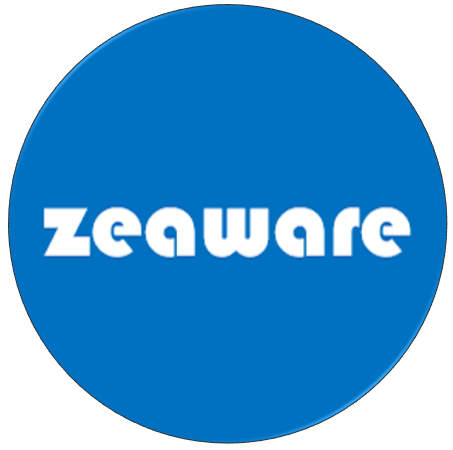What Enterprises Get Wrong About RAG
RAG Is Not Dead, It’s Evolving
With the rise of advanced function calling, agent frameworks, and multi-step LLM workflows, many organisations are asking:
“Do we still need RAG?”
Some even assume function calls like search_content() make RAG obsolete.
They don’t. In fact, RAG has become more important, because modern AI systems now blend three retrieval modes:
- Developer-controlled RAG (deterministic, governed evidence)
- Model-initiated content search (dynamic exploration)
- Governance-directed hybrid retrieval (the correct blend of both)
The core issue is no longer RAG vs function calling. It is: Who controls knowledge injection into the model: the developer, the model, or the governance layer?
This shift is fundamental for enterprise-grade AI systems.
Many Enterprises Misunderstand RAG
Many organisations still implement RAG as:
“Split documents → embed chunks → keyword + vector search.”
But high-performance RAG is actually a governed evidence pipeline with:
- structural segmentation
- metadata extraction
- entity linking
- hybrid vector + keyword retrieval
- effective-dated filters
- scoring and ranking
- version control
- lineage tracking
- governance gates
- audit trails
RAG is not a “search mechanism”. It is a content governance mechanism. When RAG underperforms, it’s rarely an embedding issue. It’s because the enterprise designed a search feature, not an evidence pipeline.
Why Function Calling Makes RAG More Important
Function calling introduces powerful new behaviour:
- calling internal systems
- invoking workflow logic
- running calculations
- executing approvals
- retrieving structured data
- performing validation
But with this power comes a risk that the model may attempt to execute logic on the wrong information.
For example:
- calling a lookup tool before retrieving the correct clause
- making decisions on outdated or incorrect source material
- misinterpreting vague queries and calling the wrong function
- pulling broad or irrelevant search results
RAG provides the governed, correct, versioned evidence that logic must operate on. The more you rely on function calling, the more you need governed retrieval to ensure the model is using the right evidence.
Three Retrieval Modes
Modern enterprise agents require three different retrieval approaches.
1 - Developer-Controlled RAG
Best for:
- compliance
- policy interpretation
- risk decisions
- claims logic
- regulated content
- version-controlled documents
- anything where correctness is more important than creativity
In this mode, the developer or platform decides:
- what content is allowed
- how it’s chunked and structured
- what can be injected into context
- how retrieval is filtered
- which versions are permitted
This can help increase predictability and trust - if done well - or lead to poor quality responses and apparent hallucinations if implemented poorly.
2 - Model-Initiated Search
Best for:
- exploratory queries
- broad discovery
- multi-topic questions
- cases where user intent is unclear
- “find anything relevant” tasks
Here the model decides:
- when it needs more information
- what to search for
- how to form the query
This introduces flexibility, but also risk.
Model-controlled search can:
- misinterpret intent
- generate poor or overly broad queries
- retrieve irrelevant or excessive material
- assume enough knowledge from existing context
Powerful, but not robust on its own.
3 - Governance-Directed Hybrid
This is where Zeaware Avalon is focused.
In this mode:
- the governance layer influences how retrieval is actually performed
- the platform can refine, override, or block the model’s choices
- deterministic filters and metadata rules are enforced
- evidence is validated before injection
- context must pass governance gates
This mode ensures:
- model flexibility
- platform safety
- deterministic results
- resilient, trustworthy answers
This is the pattern enterprise AI will adopt at scale.
How Governance Controls Retrieval (Not the Model)
AI governance is not just logging, security, or risk reporting. At Zeaware, we define a component of AI governance as the systematic control of how knowledge is injected into reasoning and used in outcomes.
The governance layer decides:
- when strict RAG is required
- when exploration via search is allowed
- when the model’s retrieval choice must be overridden
- which sources are permitted
- which metadata filters must apply
- how retrieval aligns with business rules
- what evidence is admissible
- what conditions must be met before synthesis
Governance transforms retrieval from a guess into a reliable system.
This is why we say:
- RAG gives the model facts.
- Tools give the model abilities.
- Governance ensures the system produces correct and consistent outcomes.
The Future: Retrieval as a Governed Spectrum
In the next generation of enterprise AI systems, retrieval will not be one technique.
It will be a governed spectrum, enterprises that treat retrieval as a single mechanism will see unpredictable behaviour.
Enterprises that treat retrieval as a governed spectrum will see:
- safer AI
- more accurate answers
- fewer hallucinations
- better user trust
- more robust workflows
- more scalable patterns
This is where the market is moving.
RAG Isn’t Competing With Function Calling, They Solve Different Problems
The winning architecture is not one vs the other. It is retrieval by governance, the system deliberately choosing the right retrieval mode for each task.
This is exactly what Zeaware’s Avalon platform is built for: governed evidence pipelines, controlled tool orchestration, and agents that operate reliably and transparently.
RAG isn’t dead. It’s becoming a controlled gateway for knowledge, rather than a search feature.
The views and technical opinions expressed in this article reflect the perspective of the Zeaware engineering team at the time of writing. They are provided for information and educational purposes only and should not be interpreted as formal product commitments, guarantees, or as a substitute for independent architectural or security assessment. Zeaware’s platform is continually evolving, and capabilities, terminology, and recommended patterns may change over time. For specific implementation guidance or to validate suitability for your environment, please contact Zeaware directly.






